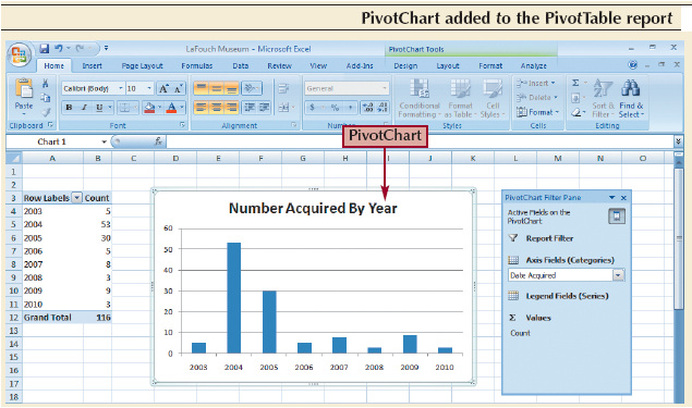

Row/Column orientation Unlike a standard chart, you cannot switch the row/column orientation of a PivotChart by using the Select Data Source dialog box. If you are familiar with standard charts, you will find that most operations are the same in PivotCharts.

Manually and conditionally format cells and ranges.Ĭhange the overall PivotTable format style.įor more information, see Design the layout and format of a PivotTable. Merge or unmerge cells for outer row and column items.Ĭhange the display of blanks and errors by doing the following:Ĭhange how errors and empty cells are displayed.Ĭhange how items and labels without data are shown.Ĭhange the format by doing the following: Move a column field to the row area or a row field to the column area. Turn column and row field headers on or off, or display or hide blank lines.ĭisplay subtotals above or below their rows. Sort, filter, and group fields and items.Ĭhange summary functions, and add custom calculations and formulas.Ĭhange the form layout and field arrangement by doing the following:Ĭhange the PivotTable form: Compact, Outline, or Tabular.Ĭhange the layout of columns, rows, and subtotals by doing the following:

Presenting concise, attractive, and annotated online or printed reports.įor example, here's a simple list of household expenses on the left, and a PivotTable based on the list to the right:įor more information, see Create a PivotTable to analyze worksheet data.Īfter you create a PivotTable by selecting its data source, arranging fields in the PivotTable Field List, and choosing an initial layout, you can perform the following tasks as you work with a PivotTable:Įxpand and collapse data, and show the underlying details that pertain to the values. Moving rows to columns or columns to rows (or "pivoting") to see different summaries of the source data.įiltering, sorting, grouping, and conditionally formatting the most useful and interesting subset of data enabling you to focus on just the information you want. Subtotaling and aggregating numeric data, summarizing data by categories and subcategories, and creating custom calculations and formulas.Įxpanding and collapsing levels of data to focus your results, and drilling down to details from the summary data for areas of interest to you. Querying large amounts of data in many user-friendly ways. You can use a PivotTable to analyze numerical data in detail, and answer unanticipated questions about your data. To use the Slicer, simply select one of the fields in the Slicer to filter your data by that field.A PivotTable is an interactive way to quickly summarize large amounts of data.In the Insert Slicers dialog box, check the field or fields (Yes, you can create multiple slicers at once!) to use to "slice" your data, then click OK.On the PivotTable Tools Analyze tab ( PivotTable Tools Options tab in Excel 2007/2010), in the Filter group ( Sort & Filter group in Excel 2007/2010), click the Insert Slicer command (and then select Insert Slicer in Excel 2007/2010).This feature works the same in all modern versions of Microsoft Excel: 2010, 2013, and 2016. To add a Slicer to a pivot table, follow these four steps. Adding a Slicer is similar to adding a second Page field ( Report Filter) but is even easier to use. Slicers make it really easy to filter data in a pivot table.
#Pivot table tool how to#
How to Insert a Slicer in a Pivot Table in Microsoft Excel See Microsoft Excel: Tips and Tricks for similar articles.


 0 kommentar(er)
0 kommentar(er)
